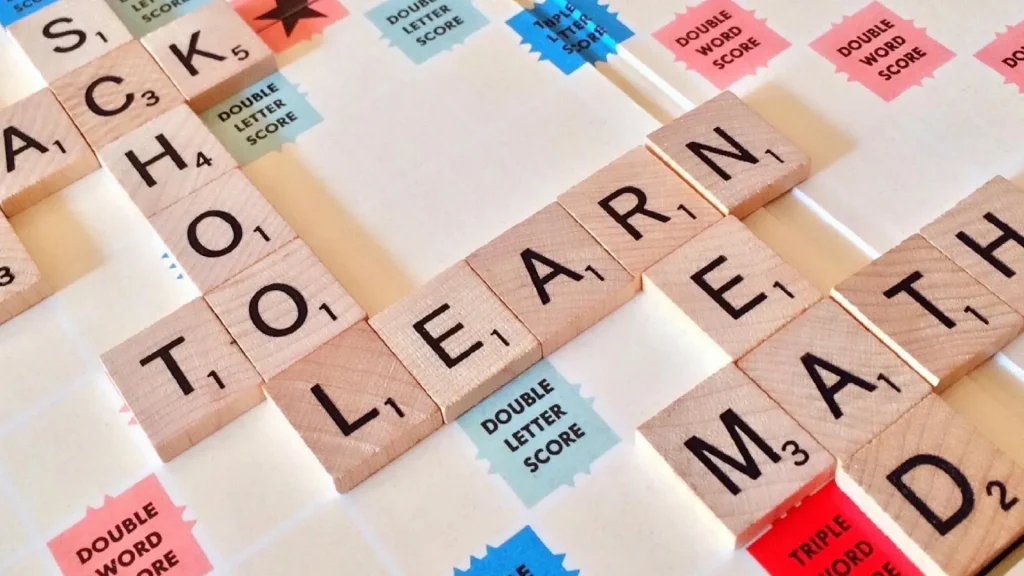Memorizing Techniques
Got a big speech coming up? No sweat! Here are three killer techniques to help you nail it: the Bullet Point Method, Mental Image Association, and the Memory Palace Technique. Let’s dive in and see how you can make these work for you.
Bullet Point Method
The Bullet Point Method is your go-to for keeping things simple and organized. Instead of writing out your entire speech word-for-word, break it down into key points. This way, you focus on the main ideas and keep your delivery natural. Think of it as a cheat sheet for your brain.
Example Table:
| Section | Bullet Points |
|---|---|
| Introduction | – Hello everyone – Why this topic matters – Quick rundown |
| Body | – Main idea 1 – Detail 1 – Example 1 – Main idea 2 – Detail 2 – Example 2 |
| Conclusion | – Recap main points – Call to action – Thanks! |
Mental Image Association
Mental Image Association is all about turning your speech into a series of vivid pictures. Our brains love images, so why not use that to your advantage? By linking each key idea to a unique mental image, you’ll find it easier to remember your points.
Example List:
- Key Idea 1: Picture a giant clock for time management.
- Key Idea 2: Visualize a tree with deep roots for strong foundations.
- Key Idea 3: Imagine a treasure chest full of gold for valuable rewards.
Memory Palace Technique
The Memory Palace Technique is like turning your home into a mental map for your speech. Imagine walking through your house and placing each part of your speech in a different room. This way, you can “walk” through your speech in your mind and recall each point easily.
Example Memory Palace:
- Living Room: Your intro is chilling on the couch.
- Kitchen: Main idea 1 is cooking at the kitchen table.
- Bedroom: Main idea 2 is resting on the bed.
- Bathroom: Your conclusion is staring back at you from the mirror.
These techniques can seriously boost your memory game, making your speech delivery smooth and confident. Try them out and see which one clicks with you.
Practice Strategies
Memorizing speeches can feel like trying to catch a greased pig, but with the right practice strategies, you can nail it. Here are some tips to help you master your speech.
Rehearsing with Others
Practicing your speech in front of others can be a game-changer. Here’s why:
- Immediate Feedback: Friends or family can point out what’s working and what’s not.
- Audience Simulation: It’s like a dress rehearsal, helping you get used to speaking in front of people.
- Engagement: You’ll get the hang of interacting with an audience, making your delivery smoother.
So, grab a buddy or two, or even your dog if they’re a good listener, and start practicing. It’s more fun and effective when you’re not doing it alone.
Importance of Rest and Hydration
Believe it or not, sleep and water are your best friends when it comes to memorizing stuff. Here’s the scoop:
- Rest: Your brain needs sleep to lock in what you’ve learned. Aim for 7-9 hours a night to keep your memory sharp.
- Hydration: Your brain is like a sponge—it works better when it’s hydrated. Drink at least 8 cups of water a day to keep those gears turning smoothly.
Recommended Rest and Hydration
| Factor | Recommendation |
|---|---|
| Sleep Duration | 7-9 hours per night |
| Water Intake | 8 cups per day |
By getting enough sleep and staying hydrated, you’ll find it easier to focus and remember your speech. So, hit the sack and keep that water bottle handy!
Memorization Made Easy
Getting a long speech down pat isn’t rocket science. It’s all about using the right tricks. Let’s break it down into two main parts: chunking your speech and nailing the delivery.
Chunking Your Speech
Chunking is a fancy way of saying “break it down.” Start big and then get into the nitty-gritty. Here’s the game plan:
- Big Picture First: Get a grip on the main sections of your speech. Think of these as your big chunks.
- Zoom In on Paragraphs: Once you’ve got the big chunks, dive into the specific paragraphs in each section.
- Key Phrases and Tone: Memorize key phrases in each paragraph. Pay attention to how you say them—your tone and timing matter.
- Word by Word: Finally, get down to the individual words and their order.
This method helps you remember the content and gives you the flexibility to adapt on the fly.
| Step | Focus Area |
|---|---|
| 1 | Big Picture |
| 2 | Paragraphs |
| 3 | Key Phrases and Tone |
| 4 | Individual Words |
Nailing the Delivery
Memorizing is just half the battle. You gotta deliver it like a pro. Here’s how:
- Write It Out: Start by writing your speech. This helps you internalize it.
- Practice with a Script: Rehearse using your script or an outline. This reinforces your memory and helps you get comfy with the flow.
- Self-Quiz: Test yourself on the key points. This makes sure you’ve got it down.
- Get Feedback: Practice in front of others and tweak based on their feedback. This helps you polish your delivery.
| Tip | Action |
|---|---|
| Write It Out | Internalize It |
| Practice with Script | Reinforce Memory |
| Self-Quiz | Ensure Recall |
| Get Feedback | Polish Delivery |
By breaking your speech into chunks and focusing on how you deliver it, you can memorize long speeches and deliver them like a boss.

Mnemonic Devices
Mnemonic devices are like secret weapons for your brain, making it easier to remember long speeches. These tricks use associations and memory aids to turn boring info into something unforgettable.
Method of Loci (MOL)
The Method of Loci (MOL) has been around for over 2,500 years. It’s all about using familiar places to remember stuff. Imagine walking through your house and linking each part of your speech to a specific spot. When you mentally stroll through your home, you recall each part of your speech.
Picture this: Your intro is at the front door, main points are in different rooms, and your conclusion is in the backyard. This mental map makes it easier to remember everything.
Studies show MOL works wonders. In one study, 78 second-year medical students who used MOL had way better test scores than those who didn’t (NCBI).
Why Mnemonics Rock
Mnemonics, like MOL, have some serious perks for memorizing long speeches:
- Better Memory: Mnemonics give structure and meaning to info, making it stick in your brain.
- Deeper Understanding: They help you really get the material, which is great for tough topics.
- Higher Scores: Research shows mnemonics can boost your test performance. Remember those medical students? They aced their tests with MOL.
- Time-Saver: Learning mnemonics might take some effort, but they save you time in the long run by making info easier to recall.
Students who’ve tried mnemonic devices like MOL say they help a ton with remembering and understanding stuff. Most of them want to keep using these tricks for other subjects too (NCBI).
Here’s a quick rundown of the benefits:
| Benefit | What It Does |
|---|---|
| Better Memory | Adds structure, making recall easier |
| Deeper Understanding | Helps grasp complex topics |
| Higher Scores | Improves test performance |
| Time-Saver | Makes info retrieval quicker |
Using mnemonic devices in your speech prep can make your long speeches stick and boost your confidence. Give it a shot and watch your memory game level up!
Speech Perception
Grasping how we perceive speech can really boost your knack for memorizing long speeches. Let’s break it down into two main ideas: talker variability and long-term memory encoding.
Talker Variability
Talker variability is all about how different speakers’ voices can mess with your ability to understand and remember spoken words. Research shows that words are easier to understand in noisy environments when they’re spoken by just one person rather than a bunch of different people (NCBI). In other words, sticking to one voice helps you recognize and remember words better.
| Number of Talkers | Word Recognition Performance |
|---|---|
| Single Talker | High |
| Multiple Talkers | Moderate |
The table above shows how your ability to recognize words changes based on the number of speakers. By focusing on a single, consistent voice, you can up your game in memorizing speeches.
Long-Term Memory Encoding
Long-term memory encoding is about storing specific details of a speaker’s voice in your brain. When you hear a familiar voice, your brain taps into past experiences to understand new words from that voice (NCBI).
| Memory Aspect | Example |
|---|---|
| Voice Attributes | Pitch, tone, accent |
| Episodic Information | Previous conversations, familiarity |
By getting used to a particular voice, your brain builds a mental model that helps you recognize and process words in the future. This makes it easier to remember long speeches by using detailed info about the speaker’s voice.
In short, understanding talker variability and long-term memory encoding can really help you memorize and deliver long speeches. By sticking to one consistent voice and using your brain’s ability to remember detailed voice attributes, you can make the whole memorization process a lot smoother.

Speech Recognition
Getting a grip on how you recognize and process speech can really boost your ability to memorize long speeches. Let’s break down two key factors that play a big role: familiar voices and speech signal variability.
Familiar Voices
Hearing a familiar voice can make it a lot easier to process and remember spoken words. When you’re used to someone’s voice, your brain doesn’t have to work as hard to understand what they’re saying. This means you can focus more on the actual content instead of just trying to decode the speech. Think of it like listening to your favorite song—you already know the tune, so you can pay more attention to the lyrics.
So, how can you use this to your advantage? Try practicing your speech by listening to recordings of your own voice or someone you know well. This can help you get more comfortable with the material and make it stick in your memory.
Speech Signal Variability
Speech isn’t just about the words; it’s also about how they’re said. Variations in tone, speed, and even pauses can give your brain extra clues to help you understand and remember what’s being said. These little differences can act like mental bookmarks, making it easier to recall the speech later.
For example, a change in intonation can signal something important, while a pause can give you a moment to catch up. Your brain is pretty good at picking up on these cues, which can make a big difference when you’re trying to memorize a long speech.
| Factors | Benefits |
|---|---|
| Familiar Voices | Easier word recognition, better focus on content |
| Speech Signal Variability | Helps with understanding, aids memory retention |
By using familiar voices and paying attention to the nuances in speech, you can sharpen your speech recognition skills. This will make it easier to memorize and deliver long speeches like a pro.
Speech Categorization
Context Sensitivity
When you’re trying to nail a long speech, knowing the context where you’ll deliver it can make a world of difference. The setting, audience, and even the vibe can mess with how well you remember and deliver your lines (NCBI).
Imagine this: practicing your speech in a quiet room might not cut it if you’re going to deliver it in a noisy auditorium. To get your brain in the right gear, try rehearsing in similar settings. This way, your brain links the content with the context, making it easier to recall when you’re on stage.
Perceptual Analysis
Perceptual analysis is another biggie when it comes to memorizing long speeches. Forget the old-school idea that your brain loses details through abstraction and stimulus reduction. New research shows that your brain can actually hold onto more details than you think.
| Feature | Old School | New School |
|---|---|---|
| Detail Retention | Low | High |
| Focus | Abstraction and Reduction | Nuance Retention |
By focusing on the nitty-gritty and practicing them, you can boost your recall and delivery. Try recording yourself and playing it back to catch those little errors or areas that need work. This kind of detailed practice will up your game.
So, if you keep context sensitivity and perceptual analysis in mind, you’ll be way better at memorizing and delivering long speeches.
